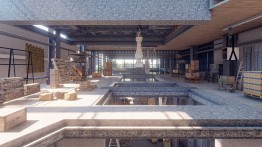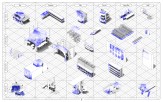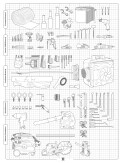MASTER OF SCIENCE IN ARCHITECTURE FALL 2022

GRADUATE THESIS
Daphne Binder, Assistant Professor Adjunct
Teddy Kofman, Assistant Professor Adjunct
The graduate thesis course is a student-led, individual exploration that serves as a flexible framework to encourage a range of study, while providing a systematic and didactic process of critiques and prompts. To support the building of logic and structure for each thesis, project-specific feedback is accompanied by a number of studio-wide questions and prompts all projects engaged with.
This semester “The Decisive Moment”—a concept born out of the photographer Henri Cartier-Bresson’s work—served as one such prompt and a springboard for the semester. The act of condensing a three-dimensional event-in-motion into a finite number of images is not foreign to architecture. The studio was tasked with producing still and animated images without losing the event or phenomenon’s multiple layers of meaning, chronology, and consequence. The resultant images were used as a tool for study.
In Cartier-Bresson’s words, the complexity of the event necessitates that one “move all around it in your search for the solution to the problems it poses—for the world is movement, and you cannot be stationary in your attitude toward something that is moving” (1). Using this concept as a generative initial exercise, students were encouraged to explore their individual thesis subjects in the context of unfolding global events—environmental, geopolitical and societal, to name a few. The students identified and represented a single moment in evolving, dynamic processes as a method through which they defined their individual project boundaries and objectives. As the semester evolved, students collectively decided to locate their projects within the context of New York City, and the decisive moment became a framework for agency and intervention.
An excerpt from the studio brief:
If we accept that we’re in the thick of a decisive moment, one of adjustment and transformation, then we can either follow inertia, hold tight and hope for the best, or navigate, push, pull, and try to reshape the event’s unfolding. We can alternatively choose to preserve a moment as well. Each thesis project is asked to situate itself in the context of the decisive moment identified before, establish an approach to it, and offer a spatial investigation in relation to it. That investigation will allow you to unfurl potential futures that offer alternative paths for these events to take place in. The resultant thesis proposal will be regarded as a response to a developing event, phenomenon, or experience in which you believe a spatial intervention could effectively serve to, among other outcomes, modify, perpetuate, or highlight the outcome. While some projects may choose to focus on subjects related to the past, as a studio we will be continuously asking to clearly define and present how the range of topics we’re investigating in the course relates to our current times.
(1) Cartier-Bresson, Henri. Introduction. The Decisive Moment. New York, NY: Simon & Shuster, 1952.
















